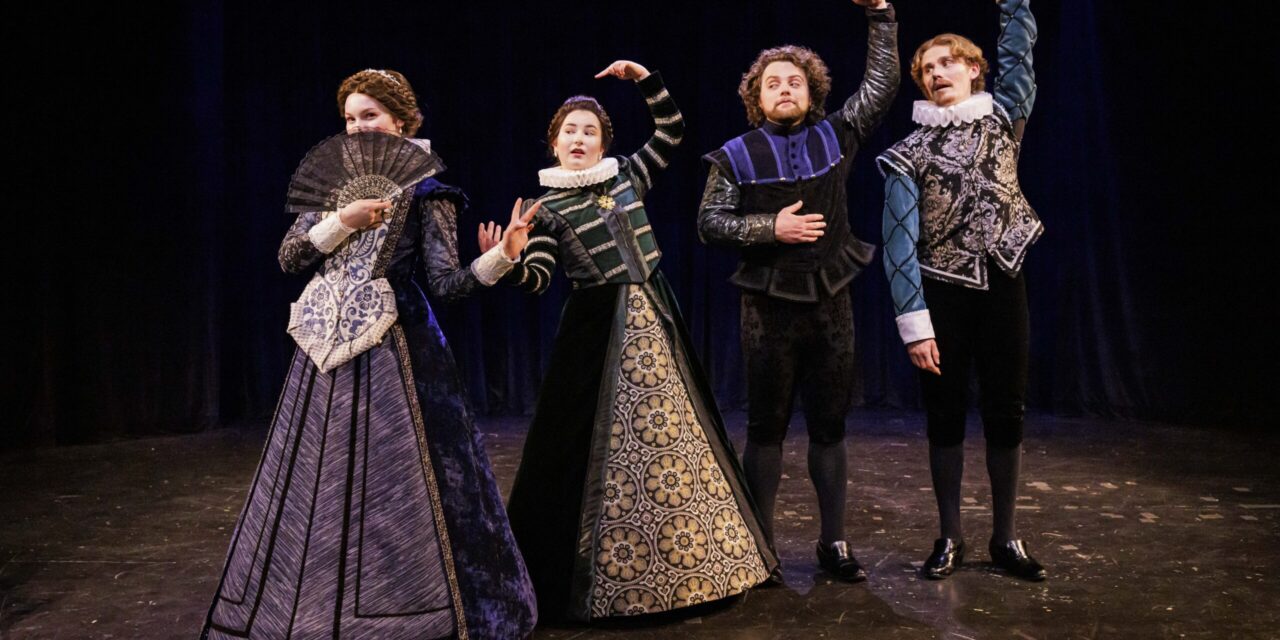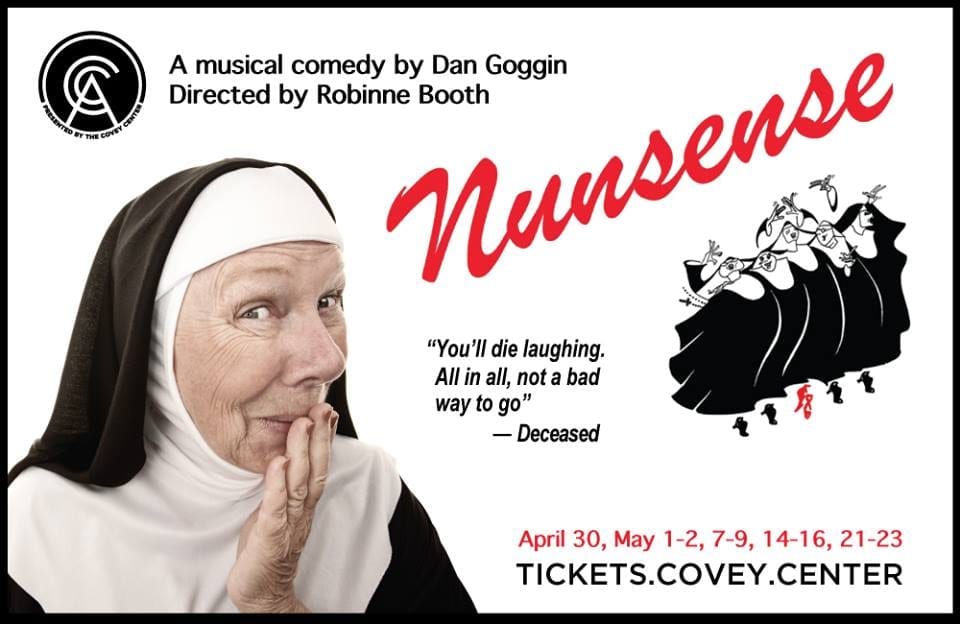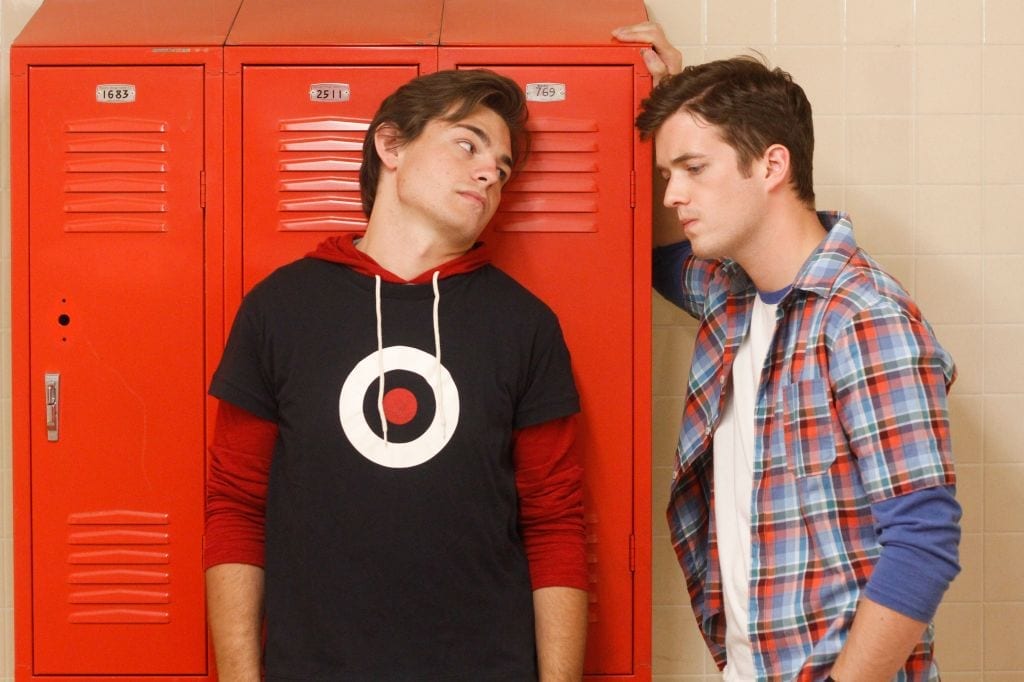PROVO — The last time I was in the BYU West Campus Studio Theatre I was watching the simplicity of six teaching artists recreate Go Dog Go. This time, the studio stage had undergone a dramatic change. A highly decorative façade using columns and a metal woven gate instantly spoke of the Spanish culture the architecture was inspired by. The seating had been arranged to be a thrust stage with a circular podium at the center, with a beautiful floral pattern set into the floor’s painted border. Marguerite Morgan’s design was warm and lavish which was an excellent precursor for the production of House of Desires by Sor Juana Ines De La Cruz and translated by Catherine Boyle.
Before a prayer, the cast entered the stage and gave a brief prologue explaining the two love triangles woven into the story’s central narrative. Each actor’s costume was exquisite. The Doñas wore stiff wide skirts nearly to the toes that came up flatteringly up to the neck and down to the wrists. The men wore fancy shirts with lace at the end, and ostentatious vests which belied their elevated character status. All the high station characters had neck ruffs of varying length and tightness but which nonetheless continued to set the tone for the play. Dennis Wright, who also did the elegant hair and makeup design, did commendable work. It is clear that the production details were given careful design and planning.
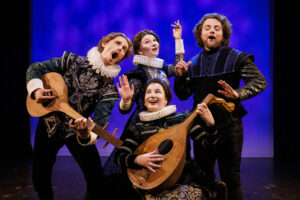
House of Desires plays at the BYU West Campus Studio Theatre through March 30
Similarly, each actor had excellent diction. Their mannerisms were tight, and the blocking always felt motivated. It was clear that when an actor had an aside to the audience, their choice to wait for all other actors to clear the space verbally and physically was part of the design. It was a play that, as a teacher of theatre, deeply impressed me with the craft that had been painstakingly poured into each aspect of the process. In so many ways House of Desires was a production that would fill all theatre makers wildest desires. So why did I walk away less than enamored with the production? It felt so long.
The story has all the makings of being hilarious. Mistaken identities, spurned advances, star crossed lovers expressing love to the wrong people. A buffoon is tricked and cheeky sword fights are played out with bits that looked as fun to direct and block as they were to watch. However, like the luxuriousness of the other production elements, it often felt like too much. I attribute this much more to the script than to director Adam Houghten who made so many moments exceptional in the production. The actors looked like they were enjoying each of the bits. I loved the scene after the song in Act 1 where performers took the song’s refrain “it is not so // it is so” to play their own jokes and objectives. There was clear chemistry, and a wonderful balance of playfulness in the comedic bits. The problem is that there were so many of them. Each bit felt elaborately planned and executed, but not high stakes given how many times these kinds of instances were seen. I imagine that as the show runs it will tighten up. Even so, the script could have cut 20-40 seconds off of every monologue and made it a stronger show.
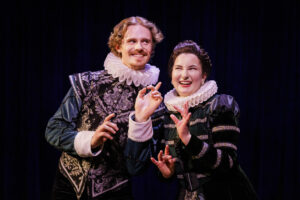
Photos: Donovan Kelly
While the run time was only two and a half hours — reasonable for a musical or a tragedy, and understandable for the period of this piece, much of the laughter died out as lengthy exposition between scenes made punchlines redundant and stole jokes before they could finish. The tropes played in the play are as classic as they are delightful. They didn’t need to be telegraphed. The story was rich and playful, but overall its denseness was its downfall.
Boyle’s translation of this text was also a bit odd. At times it sounded Elizabethan, and at other times modern idioms such as “got it” or “hook, line and sinker” — a phrase coined 150 years after the original play was written — were tossed in awkwardly. I imagine that the nuanced beauty of the original Spanish was lost in the translation and it was jarring to bounce between such different sounding vernaculars.
This did not, however, disrupt a pair of excellent performers. Doña Ana was played by Devoree Ellis and stole each moment she was on stage. Her reactions seemed sincere and genuine when she learned that her plans were being thwarted in lengthy narratives. I was impressed how she managed to have such a distinct range of suited reactions in each moment. Her cadence was unique and allowed individual words to stand on their own. I loved her sentences that would start with “if”, have a pause to reflect, and then aggressively pursue an objective. Ana is manipulative and Ellis was eager to play tactics that would impact those around her. Ana owned the story and Ellis owned the stage.
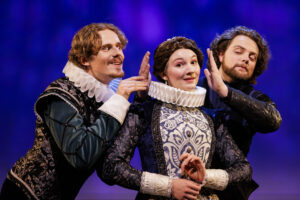
Photo: Donovan Kelly
I also was thrilled by Daniel Summerstay as Castaño / The Cloaked Man. The servant character who is always hungry, mopish about duties and delightfully bumbling was so well understood by Summerstay. He drew on the Commedia Dell’Arte archetype he was given, and had a particularly delightful bit in act 2 where he dressed up in a woman’s dress. He took the time to try on and comment on each article as it was donned and flagrantly thrilled in his own beauty. It was masterful in its craft, and he navigated all of the scenes he was in as being the submissive character but standout performer.
I could speak to the wonders of many aspects of this production and delightful performers. Each of the actors understood their parts on an intellectual level so well, it would have been a dream to be part of this production process. The design choices were simple but sophisticated as little changed in the blackbox theatre through the production, but it was well executed all the way through. In some ways, it was like watching your favorite team win in a blowout. Each aspect of it was fun, but it is almost too much to take in when the drama dissipates. House of Desires gave me all I wanted, and perhaps a little more.

This review was generously sponsored by a grant from the Provo City Recreation, Arts, and Park (RAP) grant.

